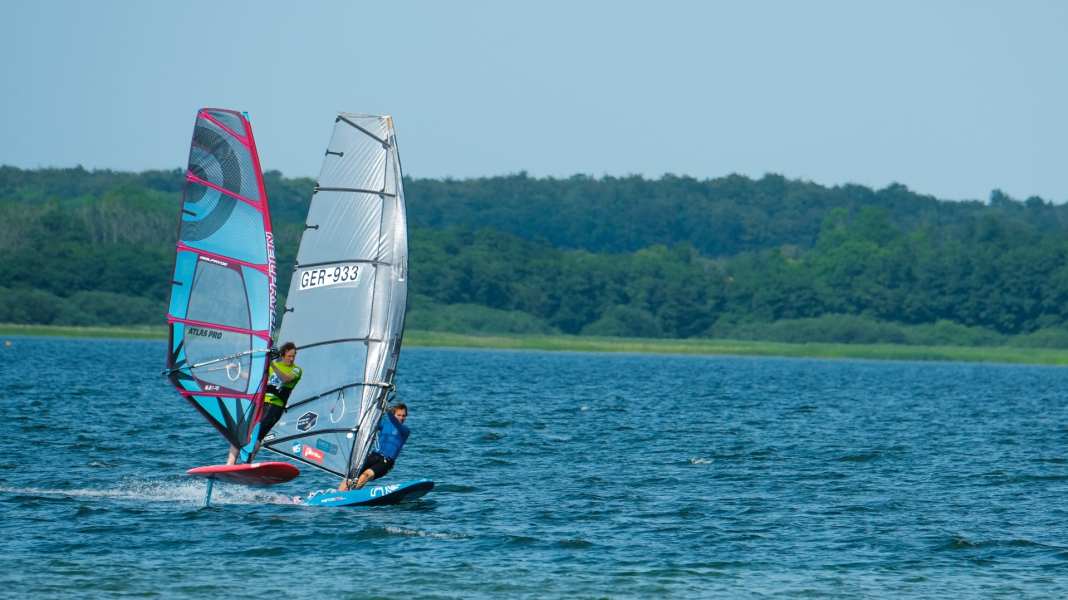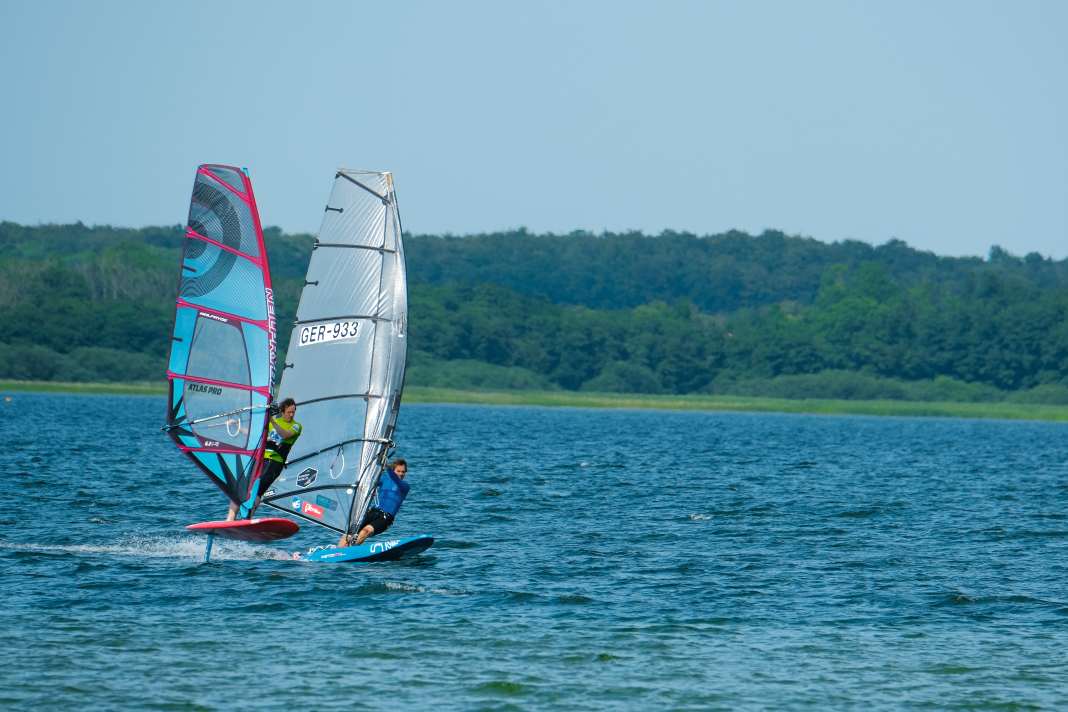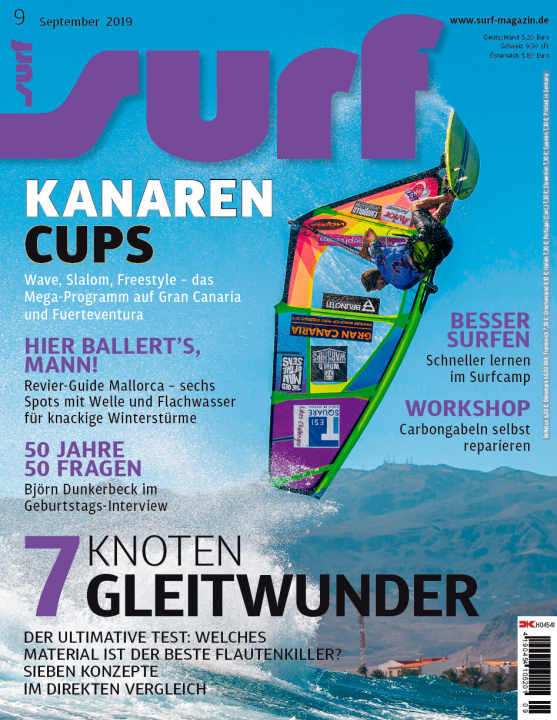System comparison 2019: Light wind material for early planing

Welcome to the surf lab. This time we used an anemometer and GPS to carry out basic research. For the planing comparisons, all boards were equipped with the most commonly used and most suitable sail sizes: The longboard with 7.5 square metres, the raceboard was allowed to use the permitted 9.5, the foilboards were fueled with sails between 6.2 and 7.5 square metres, the freerider with a camberless 8.4 freeride sail, the light wind slalom board with a 9.2 freerace sail and the formaboard with 11.5 square metres.
We have sent a suitable representative from each board or foil category into the race - the complete system comparison with all test results including technical data and ratings can be found as a PDF in the download area below:
- Longboard - GA One Design Pro
- Raceboard - Starboard Phantom Race
- Freeride XL - Tabou Rocket 145
- Light wind slalom - Fanatic Falcon LW
- Foil early gliding - NeilPryde Glide XL
- Foil Performance - Slingshot Ghost Wisper
- Formula - Fanatic Falcon Formula






The raceboard and the early planing foil started to "glide" almost simultaneously and the subsequent speed duel at 20 km/h - in nine knots of wind - was very reminiscent of elephant races on the motorway, when two articulated lorries with one km/h more or less on the speedometer seek a duel on the mountain. All the classic planing boards, from the Freerider to the Formula, were significantly faster. With the Foil, it's enough to pump yourself up to around 10 km/h - then you're airborne, but not by a long shot with the Rocket. With the Foil, the pumping power decreases quickly, with the Rocket you have to pull with what feels like twice as much force until you really glide. Surfing on an extreme foil board without "planing conditions" is possible - but pointless, because "it's lame as hell".
The light wind slalom board was surprisingly easy to control in a straight line even at 20 knots, similar to the Tabou Rocket. The planing duel between the Slalom XL and the early planing foil went - quite narrowly - in favour of the foil, the main difference being that a powerful 9.2 freerace sail was pressing on the slalom board and a 6.2 wave cloth on the foil. Our conclusion: there are also an incredible number of good options for the wind range below 13 knots, so if you haven't surfed there yet, you might find some inspiration on the following pages.

